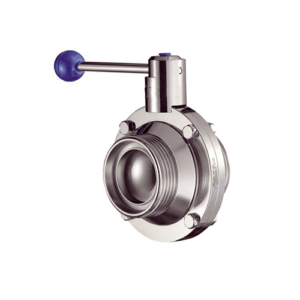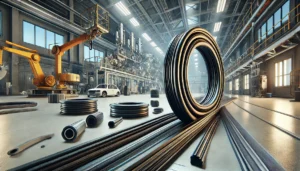Hydraulic systems make an integral part of various industries by operating different pieces of equipment. However, a single failure within such a system can bring everything to a halt and lead to expensive repairs. Addressing problems at an early stage is very important to extend the lifespan of the system and work efficiently. Most hydraulic systems problems stem from a lack of proper diagnosis and unclear guidance and best practices. Some of the best practices and issues concerning hydraulic systems are stated below:
Identifying the Problem
To fix failures with a hydraulic system, it is crucial to properly diagnose the problem. Some of the common problems that can occur with a hydraulic system are overheating, unusual sounds, fluctuations, and even loss of pressure. When factors misleadingly fluctuate, this is a symptom that aids in determining the exact issue.
- Loss of Pressure or Flow: A drop in pressure or flow can lead to a loss of power, causing the equipment to operate below optimal performance. This may be due to clogged filters, low fluid levels, or worn-out components.
- Abnormal Noise: Unusual sounds such as whining, grinding, or knocking can indicate several issues. These sounds are often linked to air in the system, cavitation, or internal component damage.
- Overheating: If the overall temperature is too high, then components can suffer from damage while fluids break down. Poor cooling systems, low fluid levels, or high pressure can all lead to the overheating problem.
- Erratic Operation: Most highly inconsistent or jolted movements where the machine cannot stop itself can heavily suggest valve failures, internal leaks, or even contamination of hydraulic fluid.
Gathering Information
Now that the approach has been selected, let’s look at the steps and information needed to ensure maximum understanding of the issue at hand in the following steps.
- Operating Conditions: Examine all temperatures, pressures, and working loads. Then verify if any of those values are abnormal during the point of failure.
- Maintenance History: Go through the maintenance log for the system and see if any work performed recently has the potential to impact the system’s performance.
- System Modifications: See if anything has been done lately to the system like component changes and new operating parameters that can restrict the system from working.
Reviewing System Schematics
With the wrong interpretation of a schematic, one can expect the worse: a plethora of issues. Its breakdown could outline the flow of hydraulic fluid, the position of multiple components (pumps, valves, etc) as well as the control logic. Every step of the explanation above can hand over value added to diagnosis. You can even seek potential problems. For example, blockages, leaks, faulty components, or anything that seems out of order. Issues arise from a lack of understanding. While flow paths and methods have their own set of inaccuracies and errors, problems can be sourced from there as well.
System Troubleshooting and Adjustments
Moving on from seeking bearings towards gathering information, what comes next is the stuffing process. Look for the set of ponce, tools, or compressed air. Here are some of the common set of problems:
- Check Fluid Levels and Quality: Fluid levels that are too low or dirty fluid are both culprits that lead towards numerous problems with the hydraulic system. Fluid that is clean alongside a proper amount is dosed, so it is best to start from here alongside checking the level. If deemed dirty, get ready to toss the system out. Don pour dirty water in a clean vessel.
- Inspect for Leaks: Be careful if the hydraulic circuit has high pressure, as this causes uncontrolled leaks and super low fluid levels. All hosts, connections, and seals should be examined and paid to bare minimal attention as they can cause quite a number of issues.
- Verify Component Functionality: Inspect key components including the pumps, valves, and actuators to confirm they are performing properly. A broken pump or valve will contribute to loss of pressure; a broken actuator will lead to a loss of controlled movement, and lead to inconsistent motions.
- Assess System Pressure Settings: It is important to check the pressure settings of the systems to ensure that they are properly set. Failure to correctly set the pressure can result in poor functionality or irreparable damage to components.
- Examine Filters: The components can suffer damage due to overheating as a result of fluids not being able to flow smoothly because of unclean or blocked filters. Consequently, ensure filters are cleaned or changed from time to time for the fluid to flow effortlessly.
Common Hydraulic System Issues and Solutions
Flushing practices can have effects on hydraulic systems, below are some issues that affect them and how to fix them:
- Excessive Wear: Excessive wear can happen due to abrasive particles within the fluids, insufficient lubrication, or operating under high pressures for too long. To reduce the damage caused, change the fluid and viscosity as well as regularly replacing filters.
- Overheating: There are a multitude of common reasons for overheating, such as aids with lack of cooling, too much pump slipping and over extending the load. If overheating must be avoided, the load must be reduced and the cooling system must be checked for proper functionality. Lastly, the temperature must continue to be monitored.
- Pump Noise: Noise in a pump is mostly caused by cavitation, air inside the system or low fluid levels in the system. Check that the fluid levels are satisfactory, free from air, and there are no leaks on the positive suction side which could let air into the system.
- System Contamination: Contamination is one of the biggest dangers for hydraulic systems as it can lead to clogging, excessive abrasion, and underperformance. To avoid contamination, always use clean fluid and ensure that all components are sealed. Replace filters regularly to eliminate particles that could damage the system.
Implementing Preventive Measures
Preventive maintenance strategies are some of the most effective means of avoiding hydraulic system failures in the future. Systems with hydraulic components need regular servicing, cleaning, and filtering to operate optimally for longer periods of time. In support of this, follow these suggestions:
- Regular Maintenance: Make it a point to set up a quarterly or monthly maintenance routine that includes fluid changes, filter replacement, hose checks, and examining the state of various key components.
- Training Personnel: All members of staff who use or are responsible for maintenance of the system must be trained properly. Well-trained staff will be familiar with common components and issues and will be able to address them quickly and efficiently.
- Monitor System Performance: You should be able to monitor fundamental parameters such as pressure, temperature, and flow rate. Abnormalities could be detected prior to system failures by monitoring these metrics.
- Maintain Cleanliness: Ensure that proper sealing is performed and reservoirs and components are cleaned regularly to avoid contamination from dirt and debris.
Utilizing Diagnostic Tools
Modern hydraulic systems operating in today’s environment are complex and modern diagnostic systems are very helpful when dealing with difficulties. These assist in real time recording of the system performance and therefore allow for quicker identification of potential problems. Some common diagnostic tools are:
- Pressure Gauges: By measuring and monitoring the pressure in the specified parts of the system pressure gauges confirm whether the set levels created for operations are being achieved.
- Flow Meters: Flow meters offer the required measurement of fluid quantity passed in a particular time period and as such identify blockages or restrictions in the system.
- Thermometers: Thermometers can analyse the temperature and detect overheating. This might be high internal temperatures due to pump inefficiency, filter clogging or other issues.
- Vibration Analyzers: These systems can help in identifying mechanical problems like bearing wear, misalignment of components, which can cause failure of hydraulic systems.
Conclusion
To effectively attend to issues in a hydraulic system, remember that tackling failures requires steps starting from recognizing signals of the failure to being informed, diagnosing the fault, and then applying the necessary actions. With scheduled periodic maintenance, effective fluid control, and some diagnostic instruments, major problems can often be avoided. In doing so, one ensures the reliability of the hydraulic system’s components, decreases operational downtimes, and increases the OS’s lifespan.










